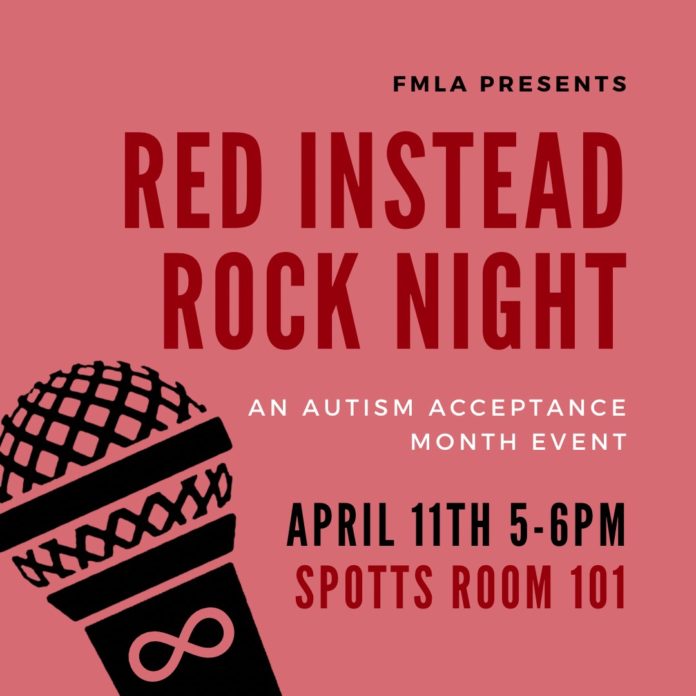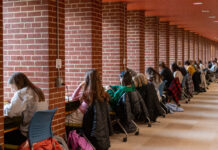On Monday, April 11, “Red Instead: An Autism Acceptance Month Event” was held in Spotts World Culture Building. The event highlighted “actually autistic” voices and experiences, as opposed to the neurotypical, or non-autistic, people who tend to speak for them. It was hosted by the Feminist Majority Leadership Alliance (FMLA) and cosponsored by eight organizations on campus.
Megan McLafferty, president of FMLA, emceed the event, but all three speakers were autistic SRU students covering an array of relevant topics.
The idea started with David “Venn” Jones, a sophomore majoring in French. They are involved in several organizations on campus, including FMLA, and last November’s “Take Back the Night” inspired them to plan a similar event for autism awareness.
They were the first to speak during “Red Instead”. As an autistic person, they know firsthand that Autism Acceptance Month is usually overtaken by neurotypical advocates.
“Tonight’s speakers are not the neurotypical parents, the neurotypical siblings, the neurotypical medical professionals,” Jones said during their speech. “They are autistic speakers talking about their own identity.
“This is why this event is called ‘Red Instead.”
They discussed the “Light It Up Blue” campaign popularized by Autism Speaks. Autism Speaks is a well-known autism advocacy charity, but their core values are damaging. Their goal involves “curing” autism through eugenics, rather than providing support to actual autistic people.
Links to the Autistic Self Advocacy Network (ASAN) and NeuroClastic, supportive organizations run by people with autism, were provided in pamphlets during the event.
“Autism is ‘a developmental disability that affects how we experience the world around us,’ Jones quoted from ASAN. “In other words, it’s a neurotype.”
Brooke Rockefeller, a junior majoring in public health and healthcare administration, was diagnosed with autism less than a year ago. Her speech was based around the five stages of grief: grieving “the life [she] could have lived” if she had been diagnosed earlier.
She discussed masking, “consciously suppressing autistic traits and forcing/mimicking neurotypical behaviors that don’t come naturally,” in order to fit in with people around her. She would force herself to make eye contact and mimic others’ body language.
“Females are oftentimes better at doing this than males and it’s also a contributing factor to a late diagnosis,” Rockefeller said.
The final speaker was Lex Gomez, a sophomore majoring in social work. Gomez is a person of color who has not been diagnosed as autistic due to medical racism.
Throughout their life, the white doctors they saw relied on their mother, a white woman, to speak on Gomez’s condition rather than asking Gomez themself. Others recognized that Gomez needed help with their mental health, but they couldn’t receive help without a diagnosis.
When they asked their primary care doctor for a referral last year, to a psychologist who could test them for autism and ADHD, she accused Gomez of wanting drugs. Gomez questioned her, asking “Why do you think I want drugs,” but couldn’t get a straight answer.
This led Gomez to self-diagnose. Medically and legally, this is not a valid diagnosis, but they have no choice.
“Self-identifying for some people is the only route because they can’t get the medical system to un-fail them,” Gomez said.
Megan McLafferty later described the process of planning “Red Instead”. Compared to previous events, she took a step back. Rather than helping to prepare the content, she wanted to allow autistic students to make their voices heard.
“It was a phenomenal event,” McLafferty said. “Several people were moved to tears.”








